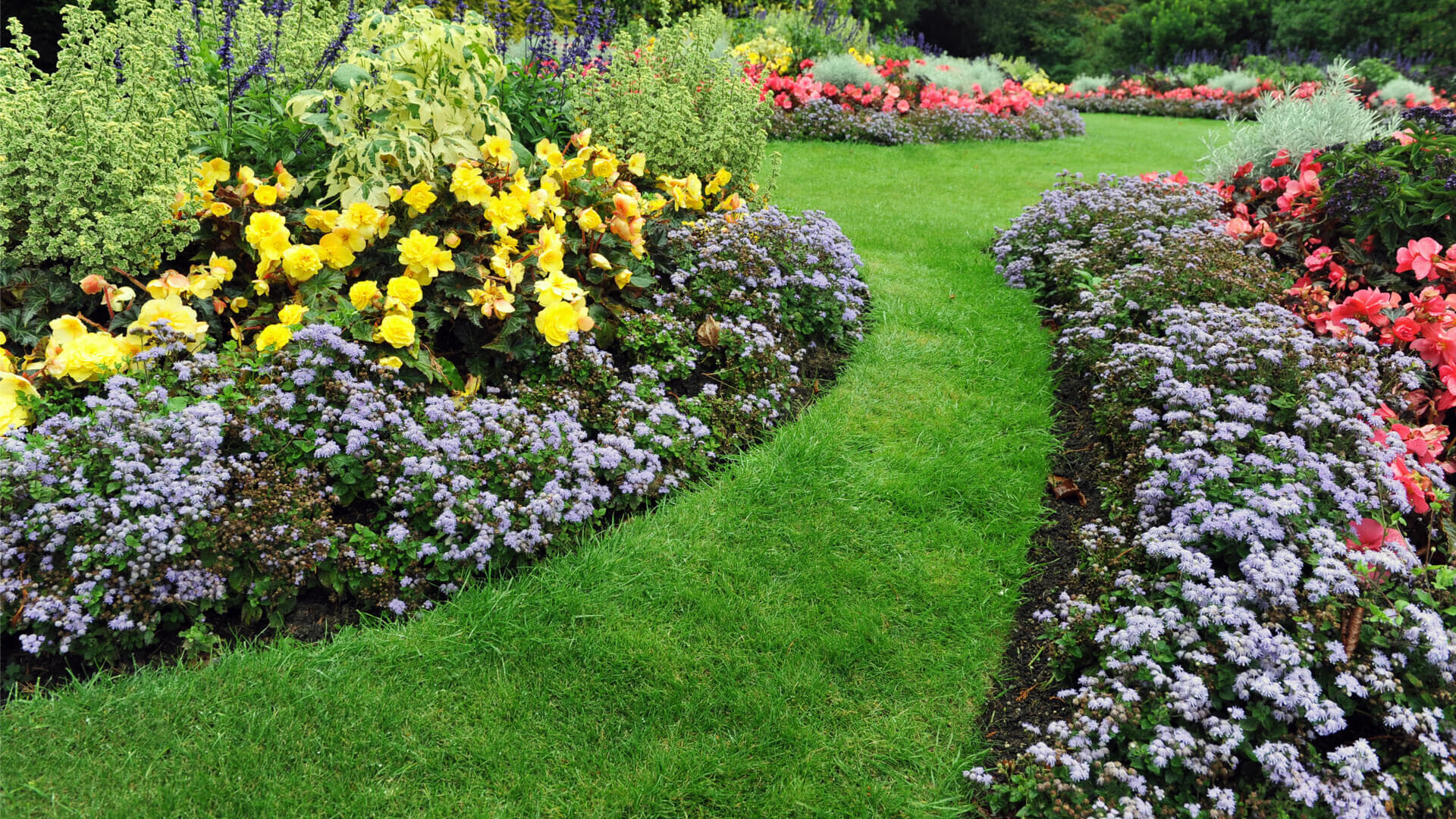Landscape Gardening for Beginners: Which Plants Should I Grow Together?
Whether you’ve purchased your first home or just want to improve your curb appeal, getting into the complex world of landscape gardening can be both fun and challenging. While growing plants isn’t as difficult as some beginners may fear, you are going to need to take the steps necessary to ensure that every plant you put in the ground has the absolute best chance for success.
Part of ensuring that success comes from knowing the background and needs of each individual plant. While you may be tempted to choose plants based on aesthetic appeal or price, you need to be absolutely sure that those two plants can cohabitate the same space before putting them in the earth. Doing your research ahead of time can mean the difference between a beautiful, growing garden and a completely dilapidated flower bed.
So how do know what to plant where? We’ve got what you need to know about planting your first new gardens and how to ensure your landscaping goes off without a hitch in this informative article.
Considering Your Space

The first step in good landscaping is to take some time and examine the space you’re living in to ensure that the flowers you want to plant can thrive where you live. While much of this involves the quality of the soil you purchase or the grade of the land you’re developing, you need to be absolutely sure that the flowers you’ve picked can survive in your biome.
Biomes
It’s never been easier to research your local biome and determine those flowers and plants that are most compatible. For example, sunflowers are a popular choice for first-time gardeners, but much like the name implies needs lots of sunlight to survive. While the sunflower can take root anywhere across the United States, you may want to consider drier climates for optimum sunflower growth. Other types of flowers are going to be far more limited in their growth than the sunflower. For example, heavy rainforest plants, and plants that grow rapidly, such as vines, won’t work in arid or especially cold climates.
You may also want to consider looking to the USDA Plant Hardiness Zone map to compare planting zones. You can easily look up the compatible zones with your prospective flowers to find the best match for where you live in the world. While most popular plants should be able to grow in North America, an internet search is still worth the time.
Space Limitations
Once you get past the macro-level planning of finding plants that work in your region, you also need to look to the micro-level planning of finding plants that fit into your garden. As you probably know, plants are so much more than the parts that stick out of the ground. Dense labyrinths of roots and veins will weave through the ground, and if you’re only thinking about the surface of your garden, you need to think ahead.
Is there concrete or bedrock directly under your garden? How many feet down is it? Do the walls of your garden stop at the surface, or go beneath the ground? You’ll need to consider the space limitations not only above ground but below to maximize your investment and ensure you’ve given your flowers and plants the best chance for success.
The number given to tell you how deep the soil needs to be is often given as the soil depth requirement. If you’re planting specialty plants, you want to make sure you’ve given your plants enough room to grow. Although, for most gardening purposes, the recommended height to give your plants is 11 inches or more.
Required Research

Once you’ve got the basic list of plants together, it’s time to look into what plant is going to work well with others. If you’re not sure where to start your research, we highly recommend picking up a gardening book with a guide or index of appropriate plant pairings. Books like Carrots Love Tomatoes or A Beginner’s Guide to Companion Planting are great places to start.
At the same time, doing your reading will be helpful for the theory behind gardening, but for the execution, why not look at some success stories? State gardens, state parks, and botanical gardens maintain large swaths of both local and regional plant live, so they can be a great springboard for planting inspiration. These gardens are often heavily curated, and those that maintain them are likely to be willing to talk with you. We also recommend that you head to your local garden and have a talk with one of the workers about what sorts of plants work well together.
Be sure to take pictures of good arrangements or plant combinations with which you’re unfamiliar. See what works and what sorts of plants are kept far away from each other. Going to these sorts of gardens can also give you inspiration for plant combinations you may have never even considered.
Common Pairs
Here are a few common flower pairings that we think look best and could serve as an excellent starting point:
- Radishes & Spinach. These two plants match well for those of you looking to grow vegetables to cook with in the kitchen. Both plants hang low to the ground and have deep root systems.
- Roses & Chives. This pairing is good for chasing away insects with strong odors and keeping your garden looking beautiful.
- Petunias & Pentas. These two plants are virtually indistinguishable from each other; yet provide enough variation to give your garden lots of depth.
- Crocus & Clematis. The two distinct flower patterns of these should result in a lovely garden that won’t be fighting for space.
Problem Pairings
To help you avoid heartache, here are a few flower and plant pairings that are sure to spell disaster for your garden:
- Cabbage & Strawberries. This classic mismatch is well known for causing terrible tastes and ruining the soil. Avoid any member of the cabbage family near strawberries at all costs.
- Cauliflower & Tomatoes. Both tend to claim too much of the earth to work alongside each other.
- Tall & Short Plants. Any time you’re working with a height difference, you need to make sure you can get sunlight to each plant. Tall plants too close to shorter plants will stunt growth.
- Allelopathic Plants. These plants include sunflowers, tomatoes, soybeans, and peas. They compete together and often disrupt the growth of one another, so keep them far away.
Final Thoughts
We hope that these landscaping tips help you find the best starting point for your garden. And while all of this discussion of problem pairings might dissuade you from starting on your next flower bed, don’t fear. For every bad pairing you find, there are hundreds of great options that will give you the garden you desire.
Just remember to do your research, know your location’s strengths and weaknesses, and plant with the confidence of knowing that the next blooming season will look better than ever.




